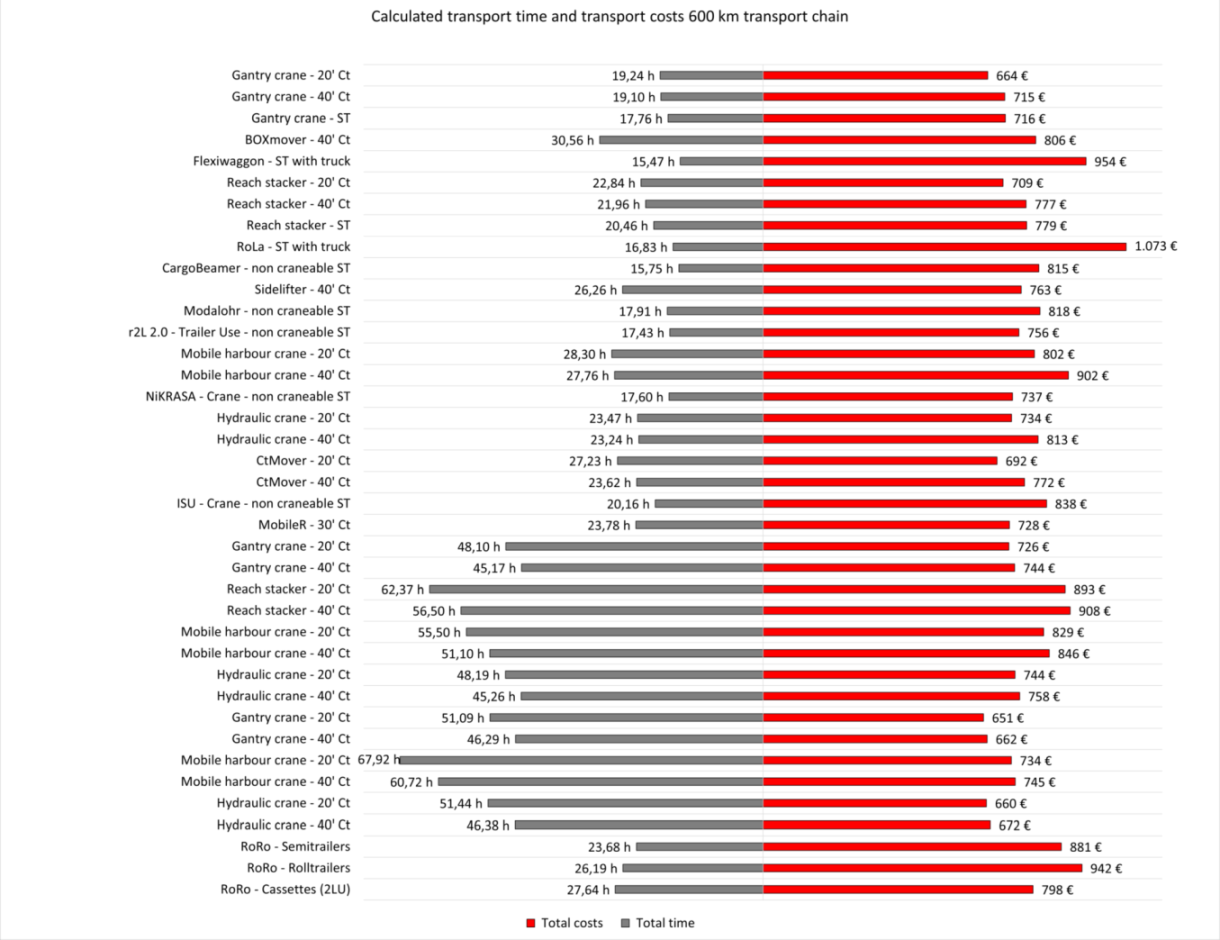New EU study: vertical transshipment (rightly) dominates intermodal transport in Europe
Intermodal transport helps to achieve European and German climate targets by shifting freight transport from road to the environmentally friendly modes of rail, waterway or short sea shipping. This requires efficient and competitive transhipment facilities. In addition to those that have been tried and tested for decades, new technologies have emerged over the years to compete for the favor of users. It is not just a matter of competing with each other, but of shifting additional new traffic off the road with sophisticated systems.
But which intermodal transhipment technology is actually the best for my transports?
This question was investigated by a team from PwC and KombiConsult on behalf of the European Commission as part of the study “Comparative evaluation of transhipment technologies for intermodal transport and their cost”. The study examined 16 transhipment technologies established on the market for different loading units and transport chains, so that a total of 39 combinations were presented for transport distances of 600 and 1,000 km respectively.
The comparison was based on model transport chains. The underlying basic assumptions were defined with the European Commission. The technical and financial input parameters of the technologies considered were recorded in close consultation with the respective providers and users. Comparability was also increased because no financial support for construction, procurement and operation was taken into account.
Result of the study
The results of the study show that gantry crane technology is not only firmly anchored in the market, but also offers a competitive and cost advantage over the other technologies for craneable load units on all modes of transport in the transport chains considered. Specifically for the transhipment of semi-trailers to rail, it was shown that the higher tare weight and slightly higher acquisition costs of the craneable trailer are clearly compensated by the advantages of vertical transhipment with simple wagon technologies.

However, in terms of handling time and thus total transport time, the gantry crane has to admit defeat to newer technologies that enable simultaneous handling of several load units. Here, the horizontal handling technologies for semi-trailers and articulated vehicles between road and rail stand out with particularly short handling times.
Likewise, some wagon technologies enable better loading gauges in many cases than conventional pocket wagons.
In comparison with pure road transport, the cost advantages of intermodal transport chains also become clear with increasing transport distance. The positive effects increase further if the external costs of the transports are also taken into account.
All results must be viewed in a differentiated manner. The chosen model environment allows the comparison of the technologies, but changes in the model parameters are directly reflected in the results.
Download of the study and contact
The executive summary and the entire study are available for download at the links below:
KombiConsult is a consulting company specialized in intermodal transport and supports institutional clients and commercial companyies in the optimization of intermodal transport chains.
Your contact person at KombiConsult is:
Jannik Barth
+49 69 244 32 93 179
jbarth@kombiconsult.com